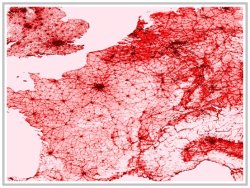
 The
statistical analysis shows that the six case study areas can be clustered
according to its spatial-temporal development into three groups:
The
statistical analysis shows that the six case study areas can be clustered
according to its spatial-temporal development into three groups:
Milan, Bristol: continuing and rather
strong spatial de-concentration of activities with: Milan: out-migration
to areas which are more and more distant from the centre; and Bristol:
a more polycentric pattern, with two other urban poles in the hinterland;
Stuttgart, Brussels: moderate spatial
de-concentration of activities, tending towards a stagnation of the pattern
with: Brussels: sprawl slowing more recently; and Stuttgart: sprawl at
a low ebb
Rennes, Helsinki: continuing spatial
concentration of activities: these two metropolitan areas do not exhibit
all the classic conditions of urban sprawl
![]()
The sizes of these spatial systems in term of their areal zoning and also
their aggregate populations and employments are very different as we illustrate
on the next pages.
